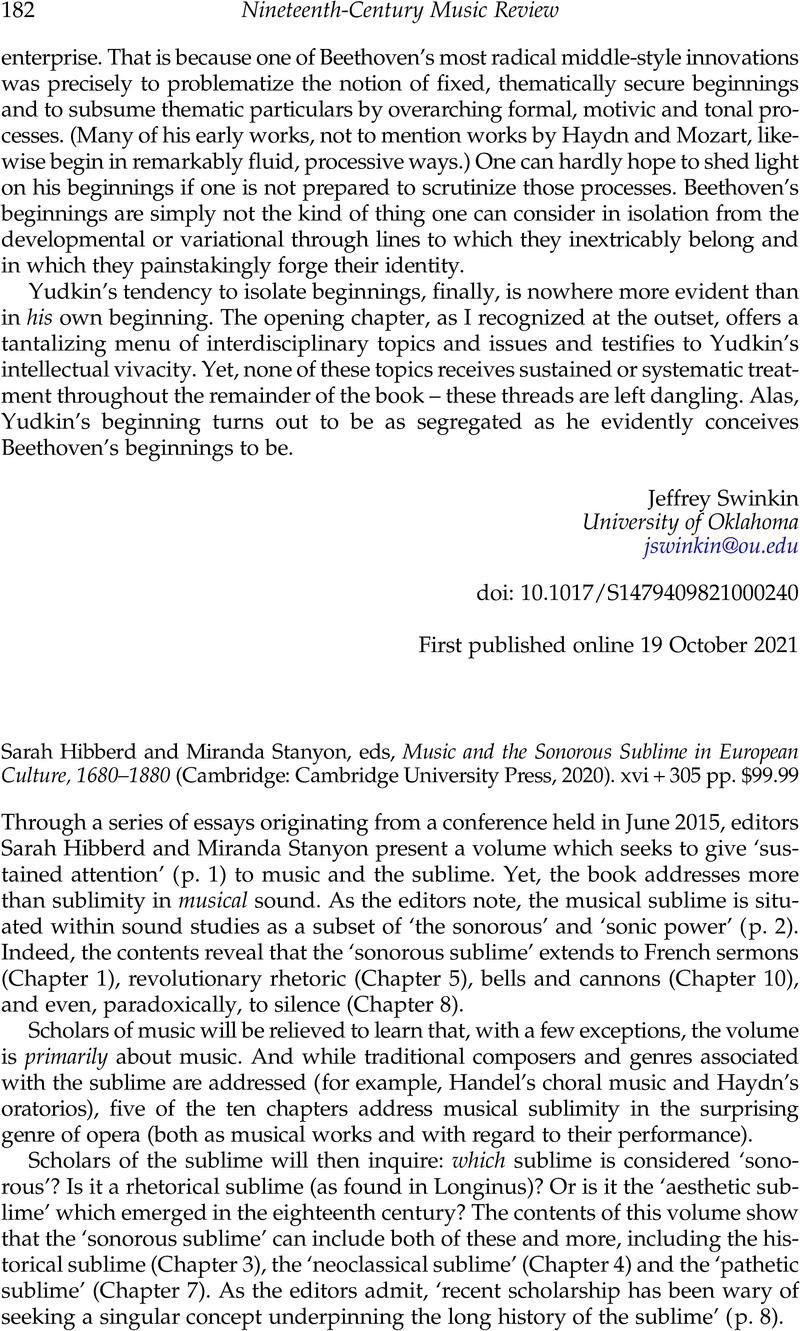No CrossRef data available.
Article contents
Sarah Hibberd and Miranda Stanyon, eds, Music and the Sonorous Sublime in European Culture, 1680–1880 (Cambridge: Cambridge University Press, 2020). xvi + 305 pp. $99.99
Published online by Cambridge University Press: 08 October 2021
Abstract

- Type
- Book Review
- Information
- Copyright
- Copyright © The Author(s), 2021. Published by Cambridge University Press
References
1 Aspden addresses Wye J. Allanbrook's scepticism regarding Handel and the eighteenth-century sublime directly, identifying it as ‘based on a very partial, Germano-centric reading of the literature’ (p. 67, with reference to Allanbrook, , ‘Is the Sublime a Musical Topos?’, Eighteenth-Century Music 7/2 (2010), 263–79CrossRefGoogle Scholar).
2 Stanyon (a scholar of eighteenth-century literary culture) admits that ‘this chapter has perhaps played fast and loose with harmony’ (p. 199). She suggests a range of possible ways that ‘harmony’ could relate to the sublime, beginning with Longinus (p. 178) and ending with an exploration of the ‘confounding semantic range’ of the word (pp. 195–99).



